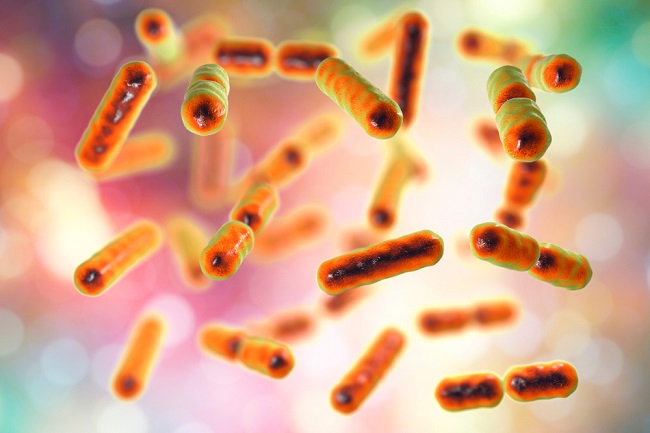Scientists find new pre-clinical link between gut microbiome and brain function
Published: 12 March 2020
Scientists at the University of Glasgow have described new molecules which form a direct link between the gut microbiome and the brain
Scientists at the University of Glasgow have described new molecules which form a direct link between the gut microbiome and the brain, leading to inhibition of brain cell function in pre-clinical investigations in mice.
In the study, conducted in collaboration with AstraZeneca and published today in Science Advances, scientists were able to identify two new bacterial molecules that were present in both the gut and the brain of mice.

The researchers used a technique called mass spectrometry imaging (MSI) to map these molecules, which were produced by bacteria in the gut microbiome, before they travelled to distinct parts of the brain.
The molecules – which were found within specific regions of the mouse brain – have a similar structure to carnitine, a molecule used to help burn fatty acids for energy.
Alterations to the gut microbiome are associated with various neurological diseases, yet evidence of a direct interaction between gut microbiome compounds and the brain has remained elusive.
Dr Dόnal Wall, from the University’s Institute of Infection, Immunity and Inflammation, said: “Communication between the gut microbiome and the brain is now recognised as playing an important role in neurological health. The novel techniques we used in this study allowed us to demonstrate a molecular exchange between the gut microbiome and the brain, which could be of biological importance in many diseases.
“Given alterations in our gut microbiome have been linked to a number of neurological conditions, understanding the means of microbial communication between the gut and the brain is more important than ever.
“In this study, the microbiome compounds we found – which ‘mimic’ and localize with carnitine after travelling to the brain in the mice we studied, also affected its function, making it an extremely important finding for ongoing research in this area.”
This is the first mechanistic description of a microbial molecule inhibiting the function of the central nervous system’s mitochondria – the parts of cells responsible for energy production.
The two novel molecules produced by the gut microbiome described in the study are the first that can cross into the brain of mouse models and localise with, and antagonise, the function of carnitine.
Dr Richard Burchmore, Glasgow Polyomics, University of Glasgow added: “Given the function of these molecules and their location in the brain of our mouse models, we need to further investigate the role of the microbiome in neurological conditions, particularly where mitochondrial dysfunction has been described and where disturbances in the gut microbiome are noted.”
Dr Richard Goodwin, Head of Imaging & AI, Clinical Pharmacology and Safety Sciences, R&D, AstraZeneca, commented: “Advances in imaging technologies, such as mass spectrometry imaging (MSI), are enabling scientists to see in unprecedented detail the events that are happening within their samples. This collaboration is a great example of how MSI can be utilised in an innovative way to provide valuable scientific insight to deepen understanding of a previously poorly understood molecular relationship.”
The paper, ‘Microbiome-derived carnitine mimics as novel mediators of gut-brain axis communication’ is published in Science Advances. The work was funded by the Biotechnology and Biological Sciences Research Council (BBSRC) and AstraZeneca.
Enquiries: ali.howard@glasgow.ac.uk or elizabeth.mcmeekin@glasgow.ac.uk / 0141 330 6557 or 0141 330 4831
First published: 12 March 2020
<< March

